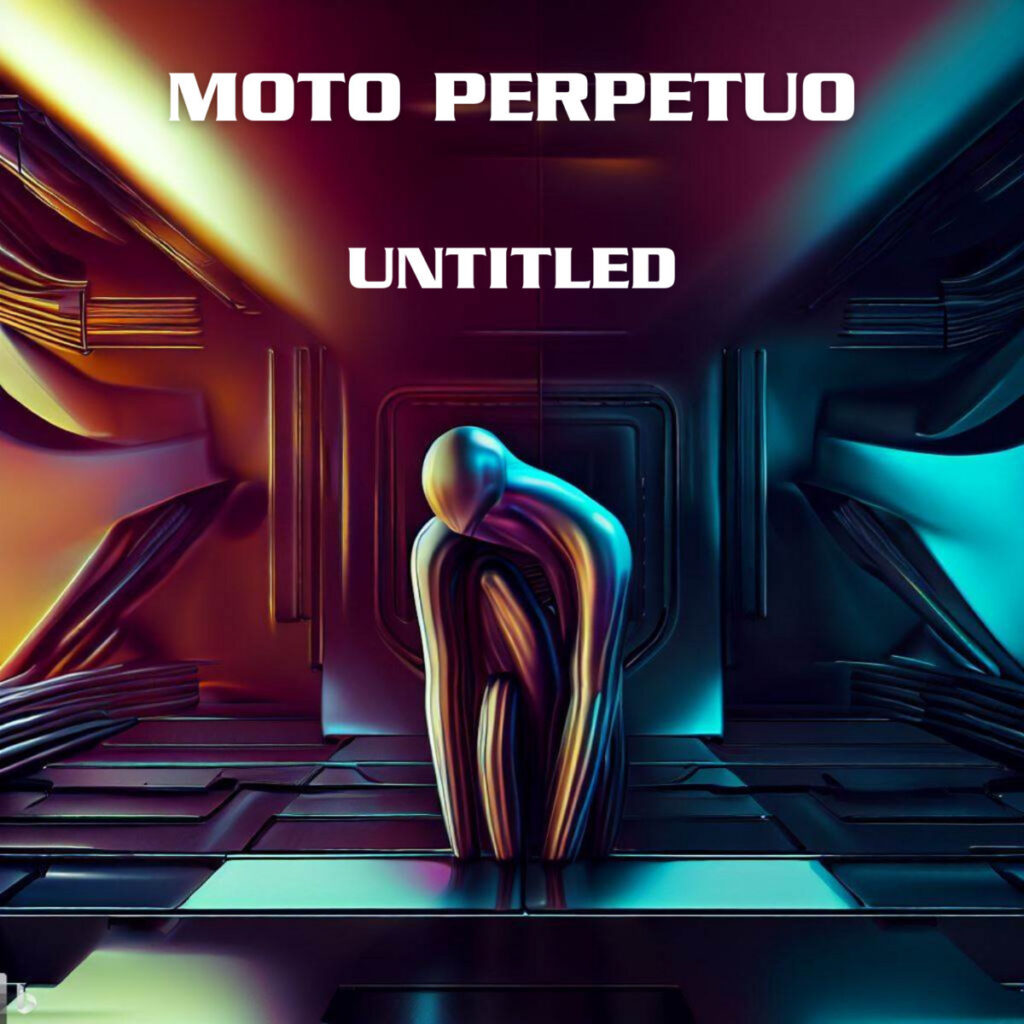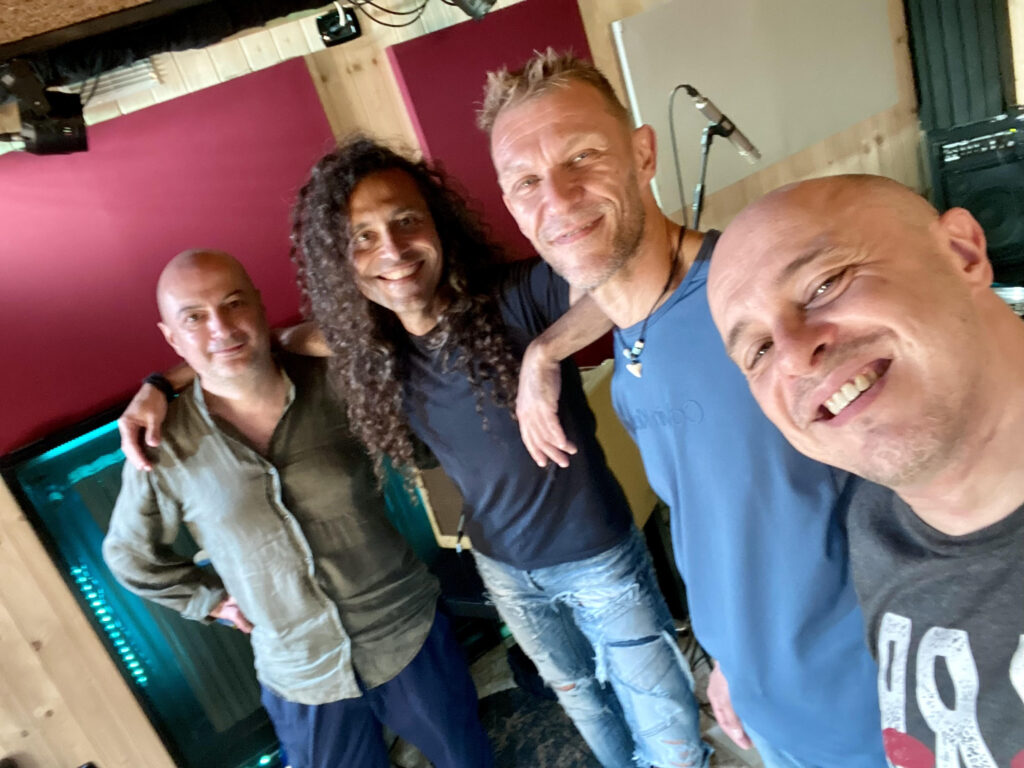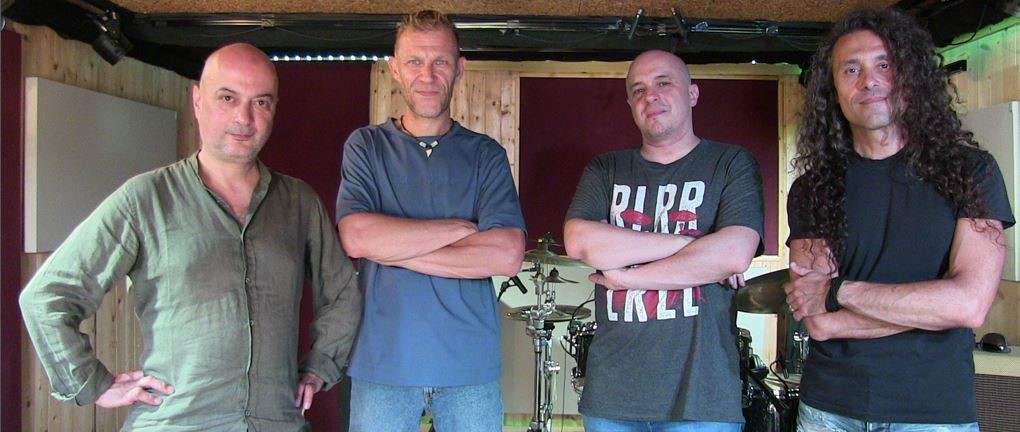Embark on an enchanting exploration into the diverse sonic landscape of Moto Perpetuo, an Italian quartet originating from the vibrant town of Gallarate, nestled close to Milan. Enchanting audiences with their progressive and fusion melodies since 1996, Moto Perpetuo has maintained an unbroken bond within the same lineup, forged from the shared passion of four friends.
Inspired by the titans of jazz rock and fusion, the band’s sonic explorations extend beyond boundaries, embracing progressive landscapes, jazz atmospheres, funk grooves, and tender ballads. Having crafted three albums between 1998 and 2008, Moto Perpetuo redirected their focus towards live performances and video productions for their social channels. Now, after a remarkable 15-year hiatus from recording, the band resurfaces with a new album, marking both a culmination of their past endeavors and a promising point of departure into the future. Join us as we delve into the creative minds of Moto Perpetuo and uncover the essence of their enduring musical journey.
Let’s dive into the featured track on the compilation. Can you share the inspiration or story behind “Clave Surprise”?
In the construction of the song, we used a clave rhythm that was shifted starting from the middle of the bar. In addition, there are drum interventions that lead the tempo to generate increasing moments of surprise by creating ever-changing expectations. In this case, the creative process and the intended effect gave the idea for the title.
The graphics and video animations connected with the song show an android finding a ruined piano on an abandoned planet and, opening the lid, releasing a glowing treble clef. We liked the idea of affirming the importance of the creative spark in a world in which music has been gradually losing importance.

Walk us through your creative process. How do you typically approach writing and composing music? What was your creative process like for your recent album “Untitled”?
We always start from material brought to rehearsals such as atmospheres or themes. We re-enact joys and sorrows in music in a kind of soundtrack of our experience, made of emotions, landscapes, situations. The most interesting things are sifted out and a possible structure of the piece is discussed. At this point it is also decided whether it is necessary to add new thematic sections or variations of those produced. Certain thematic cues can be reused, for example, to build a drum special or whatever.
In other cases, the track arrives in the rehearsals’ room when it is almost complete. At that point, it is usually enough just to create all the dynamics necessary to give breath to the tune, making the best use of the characteristics of our instruments. Most of the songs are written by Alessandro Lualdi (piano, keyboards) and arranged by the whole band.
Who or what are your major influences in progressive rock? How do they impact your own musical style?
Our references are quite heterogeneous. As far as the prog/fusion scene is concerned, there is the whole strand of the 70s, apart from the fundamental jazz-rock legacy of Miles Davis, Weather Report and Corea, but there have also been groups such as Rush, Kansas, ELP, Genesis, King Crimson up to Dream Theater. Let’s not also forget Southern rock and Latin Jazz (Michel Camilo, for instance). There would be an endless discography to mention, and it should include many composers even of soundtracks, from Ennio Morricone down to Vince DiCola. We certainly see on the current scene several bands and ensembles of undisputed value, from Snarky Puppy to Dirty Loops and Vulfpeck, which give us courage to continue our musical path.
What challenges have you faced as an artist in the scene, and how have you overcome them?
The challenge is to survive in a world that is constantly changing by following logics that take us away from the way we have always conceived music. The challenge is also to remember that music is not dead behind the torrents of words that so many are feeding us, with algorithmically generated tracks that certainly do not entice young people to take up an instrument. It is not a mission, but it is our definite calling to insist on the importance and intrinsic value of instrumental music.
One more challenge we have always faced over the years is also finding opportunities to play our music live, which is often considered too jazz for rock venues and too rock for jazz venues. After many years, however, we have become pleasantly accustomed to the idea that the stylistic contrast is one of the hallmarks of our compositions.
How do you see the scene evolving, and what role do you believe your music plays in that evolution?
We see some immensely valuable artists relegated to the fringes of the music scene in real niches. We are part of all those defeated by the market who, however, do not give up, because they take pleasure in what they do and appreciate the judgment of those who are still amazed by our project rather than discounted big numbers driven by the mainstream.
Share with us some of the most memorable moments in your musical journey so far.
A memorable moment for us was playing in the late 1990s at Capolinea, a legendary club in Milan (now closed) where we used to see our heroes playing live.
In the span of 28 years of activity, however, we have also done a lot of groundwork, having experiences somewhere between tragedy and fun. Just to mention two anecdotes, we have played in a venue where our drummer saw a stray cat glide from the roof onto his pizza or in a club where our bassist saw a drunken fellow come on stage and try to snatch his instrument. It all served to gain experience and strengthen our will to continue.

Do you have a personal favorite among your own compositions? If so, which one and why?
Each of us has our own favorite songs. To mention just one would not be fair. Certainly, there are songs whose construction was more contrived and others that were born and grew on their own. Let’s say that among all the tracks on our records there are very few that we could consider less successful fillers. We have already skimmed the most useful material at the source, and we have so many songs, even from the past that should be taken up and reevaluated. It is very interesting for us at this stage to also receive feedback from listeners to better understand what path to take for the future.
Can you give us a sneak peek into any upcoming projects or collaborations you’re working on?
We are currently writing and arranging more material. The idea is to structure the material as much as possible. We like to improvise, but it must be done in moderation and without leaving it to the improviser to make the song work, which should run on its own legs.
We would also like to better balance the number of acoustic and electric tracks and the genres of music from which we draw inspiration. It is not out of the question that a few sung tracks could also appear: some material has already been composed. Even an instrumental, old-fashioned concept album would not be bad, since it would serve the purpose of finding a common thread among all the tracks of the project.
What does it mean to you to be a part of our compilation? How has the experience been for you?
Certainly, it is a great way to become more known and to be part of a music community. The logic of the compilation makes it possible to listen to multiple artists who compose similar music, enriching the offerings and providing space for everyone.
Is there a message you’d like to convey to your fans who will be discovering your music through this compilation?
We would love it if our listeners had the patience to venture through the album one track at a time, without any prejudice regarding the different styles they are likely to encounter during the journey.
If you could collaborate with any artist, living or not, who would it be?
There would be too many names to mention. It would probably be a singer, a saxophone or a violin player, since it would perfectly fit the sound texture of our four instruments, but it’s a tough call.
If you had to pick one instrument (besides your primary one) to master, what would it be?
The violin is a particularly fascinating instrument, which would adapt well to our atmospheres. Luckily Matilde, Alessandro’s daughter, is an excellent violinist and gave us the sound of her instrument in one of the songs of the album (Irish Lullaby), which is a 2023 edition of a tune already included in our past works.
What’s your all-time favorite progressive rock album, and why? One album that you always return to.
We would probably mention “Images and Words” by Dream Theater: it is simply perfect in every track and represents an essential point of reference for all modern progressive music.
Are there non-musical influences that find their way into your music? (e.g., literature, art, science)
We are living in a multimedia environment. Furthermore, our music is often descriptive and lends itself well to being associated with images. We start from a background feeling, which is made of sounds and noises, words, images, scents. The titles we give to the songs are often explanatory from this perspective.
Talking about the new album, most of the imagery and graphics draws heavily from dystopian science fiction, with particular reference to Asimov’s novels.
The album cover depicts a faceless android, symbolizing the essence of a title which is not a title (“Untitled”).
Any final thoughts or reflections you’d like to share with our audience?
Just give us a listen and keep unconventional music alive!
Where can our audience find more about you and your music?
Spotify: https://open.spotify.com/intl-it/artist/0QKCTmZKQNVh7spJgYm9qr?si=CPRZWPXhRKWWqjkYCgsd_g
Bandcamp: https://motoperpetuo.bandcamp.com
Youtube: http://youtube.com/motoperpetuoband
Facebook: http://facebook.com/motoperpetuoband
Instagram: http://instagram.com/motoperpetuoband
Physical CD: https://ultrasoundrecords.eu/product/moto-perpetuo-untitled

